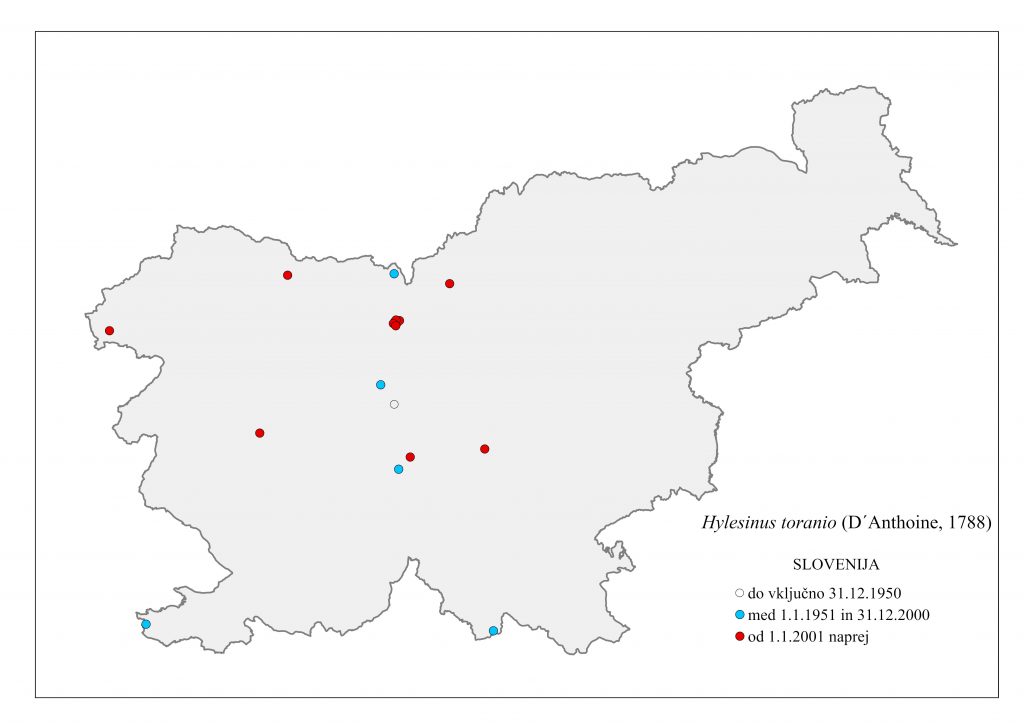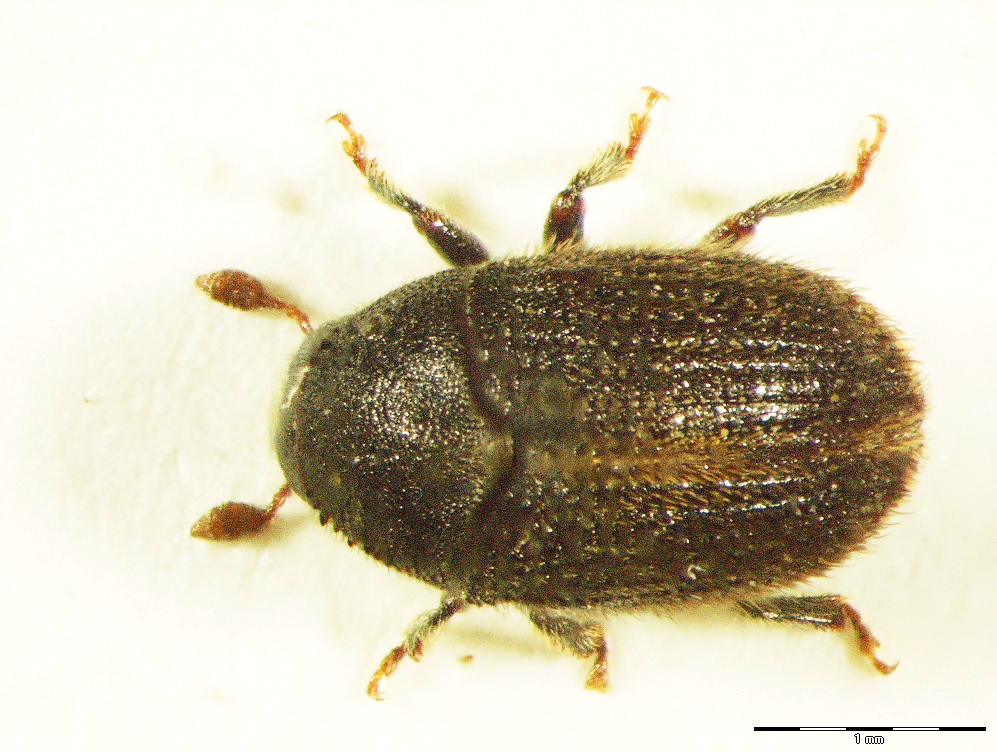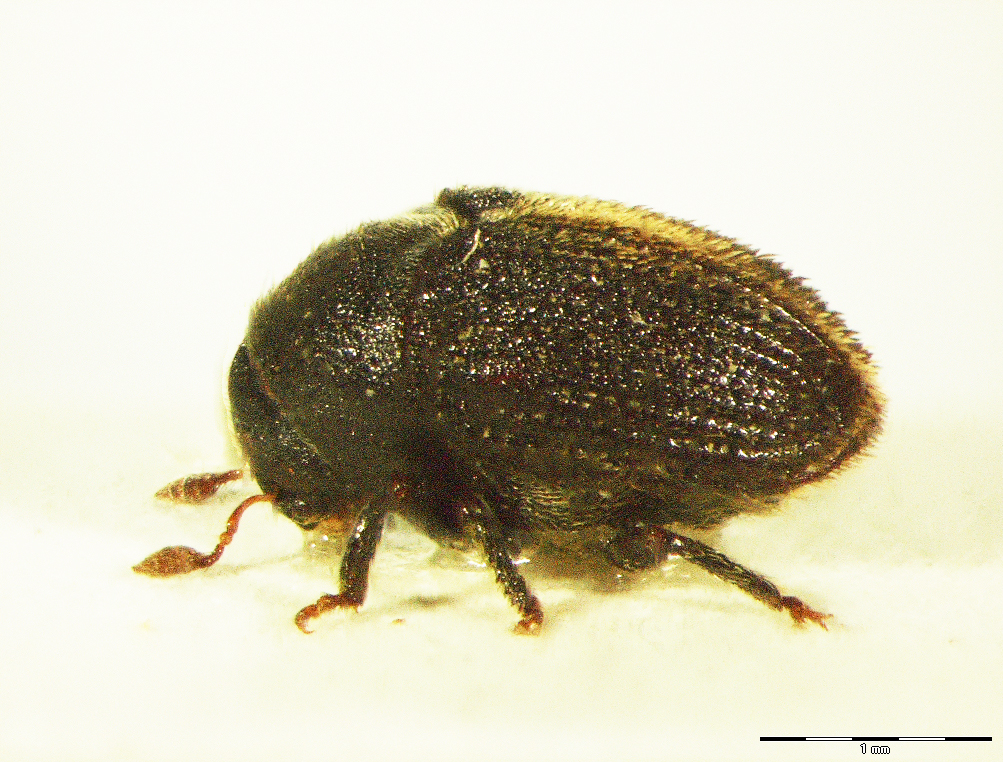04.02. Hylesinus toranio (D´Anthoine, 1788)
Presence
E: AU BE BU CR CZ DE FR GB GE GR HU IT LA MC MD NR PL SK SL SP SV ST SZ UK YU
N: AG MO
A: IS JAi LE TR
NTR
Figure 26: Hylesinus toranio, dorsal, lateral (Photo: Maja Jurc)
Older catalogs and keys – citations of name
Grüne 1979: Hylesinus oleiperda Fabricius, 1792; Freude, Harde, Lohse 1981: H. oleiperda Fabricius; Titovšek 1988: H. oleiperda Fabricius; Pfeffer & Knížek 1993: H. oleiperda Fabricius, 1792; Pfeffer 1995: H. oleiperda (Fabricius, 1792).

Figure 27: Hylesinus toranio, distribution map according to historical and recent data
Ecology and presence in Slovenia
The species is distributed in southern, central and southern parts of northern Europe, Ukraine, the Caucasus, Crimea, North Africa, Asia, and the Neotropics. Relatively few (older and recent) records are distributed throughout most of Slovenia, but records in the eastern part of the country are lacking (Figure 27). Host plants include Olea europaea, Fraxinus excelsior, F. ornus, less frequently also Fagus sylvatica, F. orientalis, Robinia pseudoacacia, Syringa vulgaris, Ligustrum spp. and Eleagnus spp.. In Slovenia, F. excelsior and F. ornus are known as host plants. A monogamous species, it develops one generation per year. It swarms in April and May, in Primorska already in March. It inhabits mainly medium-thickness material (trunks, thicker branches). The tunnel system is biramous transversely, the maternal gallery is 3-4 cm long and burrow deep into the sapwood. Larval tunnels are 5-7 cm long and terminate 1 cm deep in the sapwood. In autumn and spring, it feeds supplementarily by boring into the green crust at the base of the buds. Beetle length is 2.5-3.2 mm (Figure 26). The species is therefore both primary and secondary. It can damage olive trees.


